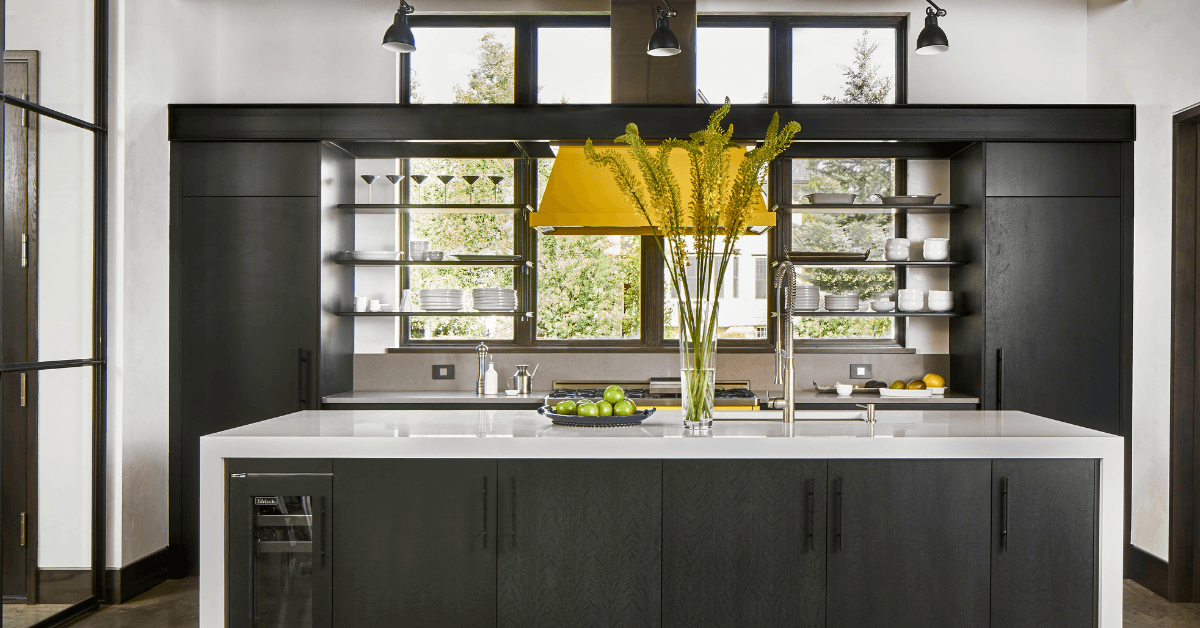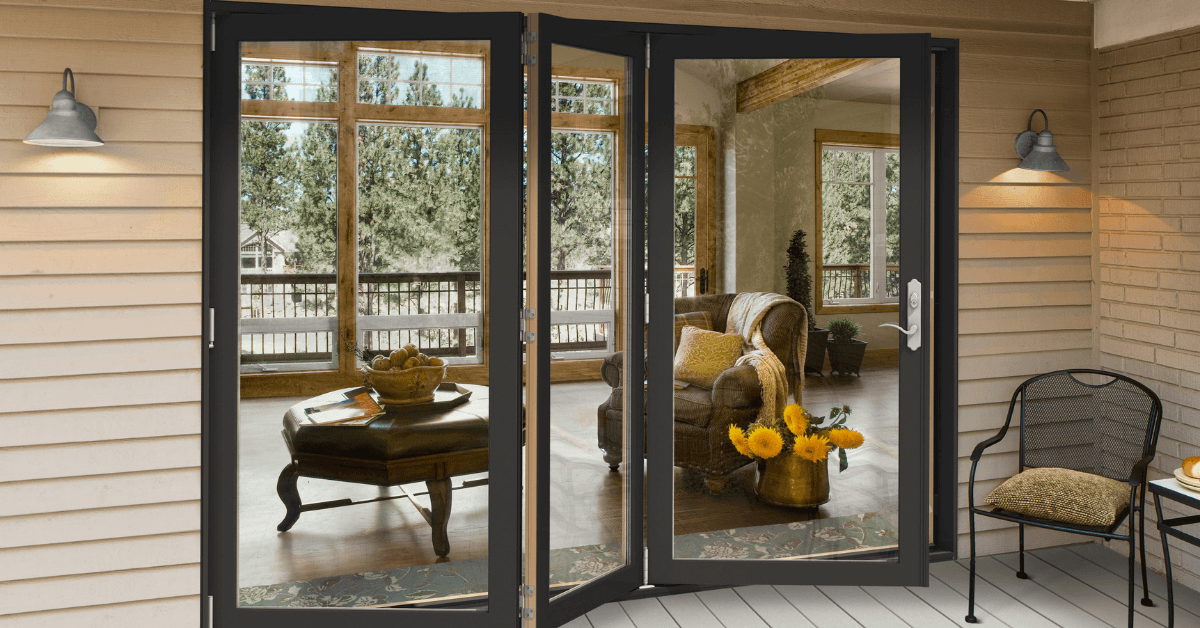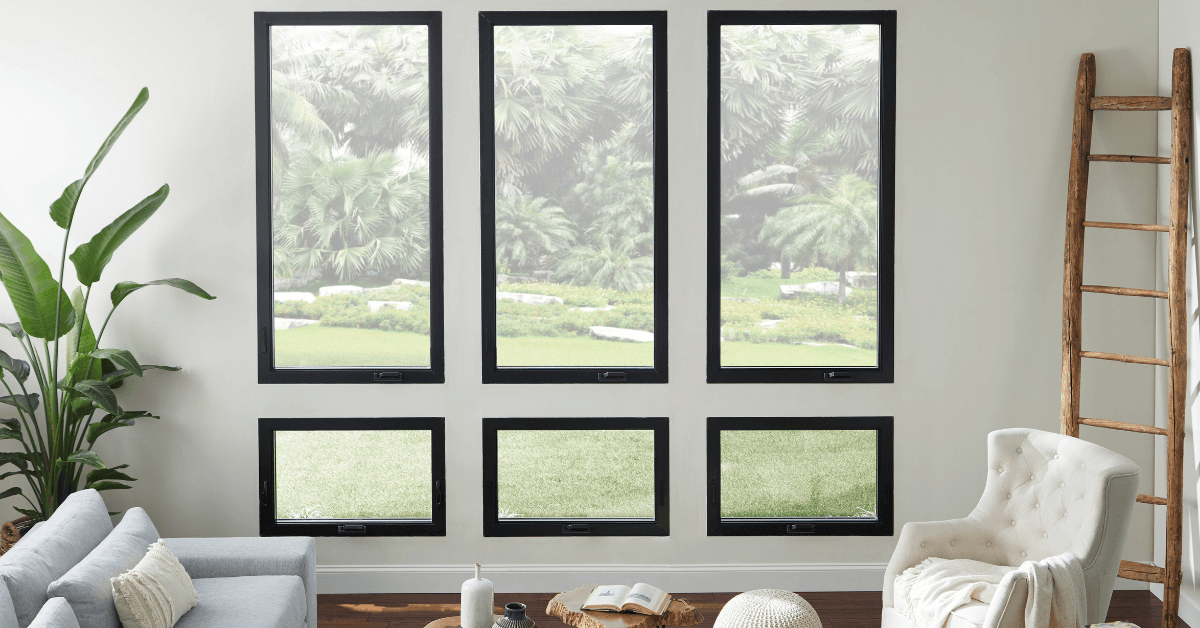Home improvement and renovations shows are great for professional, amateur, and window-shopping designers alike. You get all sorts of great inspiration and creative ideas for how to apply the latest interior design trends, bringing your vision to life.
Unfortunately for most of us, we aren’t going to open our door to find the Property Brothers ready to overhaul and decorate our houses. So, we need to take inspiration from magazines, tv shows, Pinterest and friends with good style to help make our houses the homes we dream about.
Keeping up with design trends could be a full-time job. Just when you think shiplap is all the rage, you hear rumblings that we will soon look back at them the same way we did on wood panelled basements and avocado appliances.
Whether you want to be on the cutting edge of the latest trends and styles in design, or are more comfortable with traditional décor, using the right interior windows and doors will help complete your vision.
Interior design is a profession for a reason and these experts can envision exactly what will appeal to someone based on what they like and don’t like. While this article won't give you all the skills you need to become a professional interior designer, perhaps you will draw some inspiration for your own remodel or renovation of your home.
There are many different types of interior design, from minimalist to bohemian, art deco to farmhouse. No matter your design preference, they all fall into four main categories, that serve as umbrella terms for a number of lovely substyles you can incorporate into any home décor.
The terms used to describe different styles aren’t necessarily intuitive, so let’s dive deeper into what they actually mean.
Traditional
Traditional style, for example, doesn’t mean simple and typical, without unique style. In fact, ‘traditional’ interior design is a classic elegant style that is rooted in history.
Inspiration in traditional styles of design is drawn from hundreds of years of style and builds on and incorporates those elements that is characteristic of those eras. So, rather than it being, let’s say, traditionally British influence, instead, these elements pay homage to a number of different influences throughout history that combine to create a cohesive, visibly ‘traditional’ style.
Traditional interior design is characterized by having structure and balance, with heavy use of ornamentation, patterns, and various embellishments. If you want to draw from traditional interior design influences, wood, specifically polished and dark woods, are the most common choices and having and very symmetrical style throughout will help give your interior a traditional feel.
That is why a wood door with raised panels, or the moulded panel Princeton Smooth door would be perfect choice to complement the traditional home style.
Modern
There is some confusion about what defines modern interior design. We don’t know about but you, but we hear ‘modern’ we think ‘current.’ That said, logic tells us that doesn’t make sense, or else what ‘modern’ design is, would be constantly changing as styles evolve.
So, no. Contrary to what you’d think, modern doesn’t mean current. It actually is an interior design style rooted the early 1900s and was driven by advances in materials and building at the time. That was when we started seeing straight lines in architecture and the use of steel. Other materials like concrete, metal and glass, and clean, smooth and sleek surfaces are also typical modern elements of modern design.
American modern is often linked back to Frank Lloyd Wright, back in the 1920s and 30s. Those influences are reflected in open spaces and thoughtfulness in design. Nothing is used that is not necessary. Modern design is all about minimalism and utility.
A great illustration of modern design is the typical urban loft, with their exposed elements and a cleaner colour palette than you’d find in contemporary home. Just thinking of what these units look like, you envision linear design, with an industrial style, fairly monochromatic with some pops of colour. DF™ Hybrid windows with black interior (FiniShield™ technology) would be a great choice to bring a modern touch to your home.
The slim mullion design of these windows compliments the modern aesthetic and lends to the growing trend to let more light inside. Also, the consideration of where you want the window to join and, which part, if any, is operatable, and which part is fixed are all decisions which impact the light and design inside your home.
Contemporary
Unlike modern design, contemporary design is ever changing and fluid. It’s about today and now and using whatever recent innovations– technology, material – that is available at the time.
Contemporary style shares similar attributes to modern style - the straight lines and metals, glass, the natural woods - are all attributes found in both types of interior design. Where contemporary strays from modern, is the inclusion of and consideration for more organic shapes. Contemporary design is characterized by more sweeping lines and curves and more ‘comfortable’ and warm spaces.
Contemporary design is more open to incorporating thoughtful embellishments and accents to accentuate the design elements throughout the home. It is, in some ways, a more ‘fun’ design, that incudes more colour palettes. Think of modern as the “aloof” style of design and contemporary as its ‘warm’ cousin, with a warmer colour palette and more use of colour and warm materials, like wood, versus steel.
Contemporary style, because it is more fluid and less rooted in a specific time period, includes elements from post-modernism and neo-modernism. Picture walking into a home that is heavily influenced by designs commonly found in the late 80s, like the 80’s spin on art deco. Back then, it was ‘current.’ Now it would be dated. That’s what makes contemporary a more fun way to design your home, as long as you do it understanding that it might be dated in a few years and will require a refresh.
Changing out your patio door is a great way to draw some inspiration from contemporary design. Siteline® wood folding patio doors, for example, can be a key element in creating the glass wall seen in many modern and contemporary homes.
Contemporary design is the here and now and ever changing.
Everything old will not always be new again.
Transitional
Transitional interior design is the most common style you’ll find today. Transitional style takes inspiration from traditional and contemporary style and enables people to blend the two together.
The modern farmhouse is a fantastic example of a transitional style. It pays homage to both contemporary and traditional interior design by incorporating traditional farmhouse style and modern elements, which could include the colour palette the use of white with pops of black. These homes have cleaner lines and pared-back accessories – which is more indicative of contemporary style, but also includes the more traditional aspects like materials like a butcher block cutting board and shiplap.
Other examples of transitional design are bohemian style, which is all about eclectic colours, patterns and textures in a laid-back atmosphere; eco chic, which pays particular attention to sustainable, yet beautiful elements; and, shabby chic, which loves showing off some wear and tear, either actually antique or looking like it is.
Interior design isn’t something reserved for the choice few who can afford to have someone come in and tell them how to achieve their vision. Anyone can bring in elements of a style to make their living space reflect their personality and style. Sometimes it’s a simple as choosing the right textiles and art pieces. Other times, it can be changing out larger elements, like windows and doors, to bring the whole design together.
When you are designing your space the windows and doors are critical to create a cohesive design and flow within your home will help provide a place you want to be. Cohesive spaces are intrinsically more calming and relaxing. When looking around your home and trying to find inspiration for how to reflect a more inspired design, it’s important to consider all elements.
Disjointed spaces can cause an unperceived tension that something isn’t quite right.
Look at the style of your windows – are there grills? What is the colour of the window? These things might seem trivial, but they are elements that help influence and direct or reflect your interior design style.
JELD-WEN has DF™ hybrid windows which are available with a black interior. Black interior windows are often found in modern design. Expansive windows are a stunning element to add to any home, offering great natural light and typically found in both modern and contemporary. But if you want it to take your interior design to the next level, black interior windows will get you there more than white. The little details matter.
Although you may consider your windows and front entrance of your house as part of your home’s exterior, they both remain important to tie the door design to the interior of your home. Your foyer is the introduction to your home and your first opportunity to define and showcase your style. The windows provide lighting and design that influence the feel in each room of your home. Let your windows and doors speak for you and your design aesthetic.
Consider the colour options available, the size and view of your widows, their operational functionality. Do you need fresh air? Would you prefer a completely unobstructed view? Double-hung windows, casements or grills, or choosing real wood are all options to consider that will speak to the interior design style of your home.
With options of materials, from wood to fiberglass and steel, incorporating everything, from modern clean lines to ornate designs, you can find what you need to springboard or complete your vision.
Explore Related Posts












